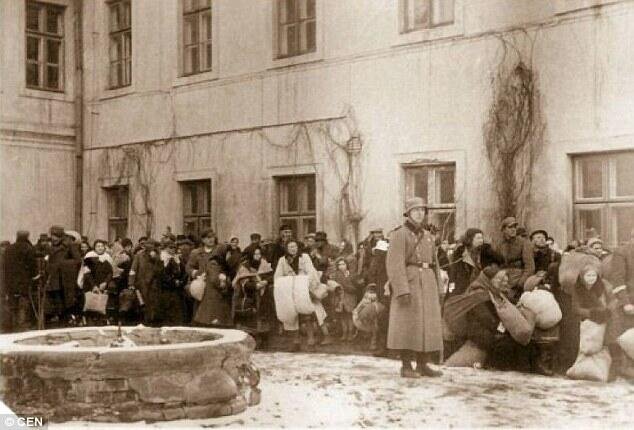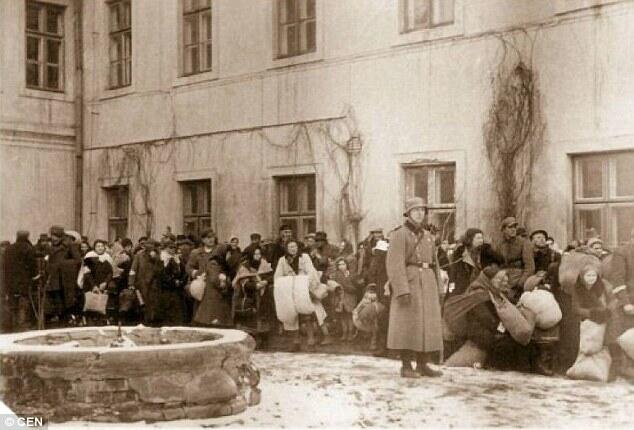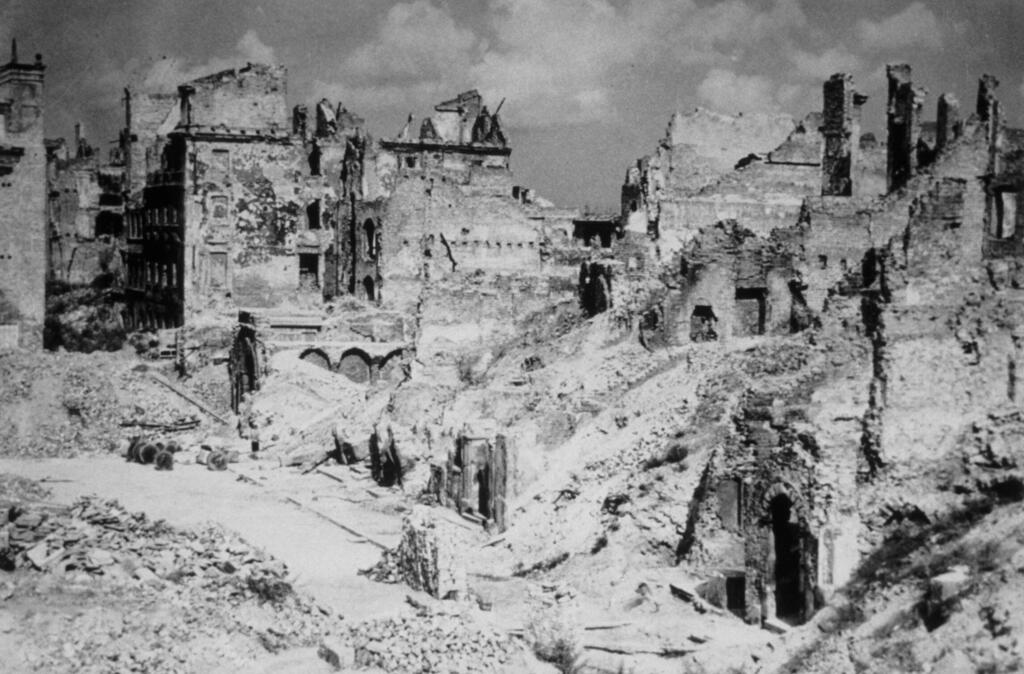In March 1942, as the Nazi killing machine shifted into full force, two brothers from Lublin set out to warn the Jews of the Warsaw Ghetto of the catastrophe looming ahead. Now, 83 years later, a long-lost photo of one of them has been uncovered—completing an emotional chapter of Holocaust history.
This is the story of Tzvi and Moshe Zilberberg, two young Betar members from Lublin who witnessed the liquidation of their city’s ghetto and narrowly escaped. Their nearly forgotten tale is one of courage, resourcefulness, and tragedy—and a reminder of how historical memory can resurface in the most unexpected ways.
On the night of March 16–17, 1942, SS officers informed the Lublin Judenrat leadership of the impending deportation of the city’s Jews “for labor in the East.” The following morning, the mass extermination of Lublin’s Jewish population began with deportations to the Bełżec death camp. Between March 17 and April 14, about 30,000 Jews from Lublin were sent to their deaths, and thousands more were murdered within the ghetto itself. This marked the start of Operation Reinhard, the Nazi plan to exterminate the Jews of the General Government, the German-controlled area of central Poland that housed the country’s largest concentration of Jews.
During this deadly operation, the Zilberberg brothers managed to escape. By spring 1942, they had arrived in Warsaw and slipped into the ghetto, carrying chilling firsthand knowledge of what was unfolding—a first eyewitness account of the implementation of the “Final Solution.”
At the initiative of Revisionist leaders in the ghetto, including Dr. David Wdowinski, the brothers met with Warsaw’s Jewish leadership, including Adam Czerniaków, head of the Judenrat. Moshe Zilberberg later recalled: “For over two hours, we described to him the horrors we had witnessed. His response was that the governor-general of Poland, Hans Frank, had personally assured him that the ghettos in Warsaw, Radom and Krakow would remain intact.”
4 View gallery


The letter that Moshe Zilberberg sent to Chaim to a stranger in which he attached his picture and asked Lazar to try to locate Tzvi
(Photo: Yad Vashem)
A particularly haunting exchange occurred with Menachem Kirshenbaum, a Zionist leader from Warsaw who had been born in Lublin. “Mr. Zilberberg, what’s the situation in Lublin? Is it true that things are quiet there now?” he asked with a hint of cynicism, appearing to downplay the brothers’ warning. Zilberberg replied, “Yes—there is silence in the cemetery.”
Confronted with a wall of denial and false hope, the Zilberberg brothers persisted in spreading the truth. They found work at Warsaw’s East Train Station, where a Polish mechanic told them of trains packed with Jews heading to Treblinka—and returning empty. They were among the first to grasp what was really happening at the newly operational extermination camp.
As the “Great Deportation” of summer 1942 began—the Nazi operation that murdered some 300,000 Jews from the Warsaw Ghetto in just two months—the ghetto’s residents finally realized that extermination was underway and that resistance was the only remaining option.
The brothers joined the Jewish Military Union (ŻZW) and took part in the Warsaw Ghetto Uprising. Tzvi was captured by the Nazis, sent to the labor camp in Trawniki near Lublin, and murdered during another revolt. Moshe survived the war and immigrated to the United States.
In 1963, following the publication of Chaim Lazar’s book "Masada of Warsaw" about the uprising, Moshe wrote a heartfelt letter to the author. He expressed disappointment that the full story of the brothers had not been included and asked Lazar to add his photo in the next edition. “Unfortunately, I do not have a picture of my brother Tzvi,” he wrote. “Everything went up in smoke.”
Moshe passed away without ever seeing his brother’s face again. But recently, during a wide-ranging research project by the Menachem Begin Heritage Center on the ŻZW underground—which for years remained neglected in Israeli academia—the missing photo of Tzvi was finally found.
With the help of Matan Shefi, an Israeli researcher living in Warsaw, the Begin Center gained access to a student file digitization project run by the United States Holocaust Memorial Museum. Among the archived files of prewar Jewish students at the University of Warsaw, Tzvi Zilberberg’s student file—and photo—was discovered.
“This is a deeply emotional moment,” said Herzl Makov, head of the Begin Heritage Center. “We’re talking about a man who was one of the first to try and warn the Jews of the Warsaw Ghetto of the coming destruction, and who fought heroically until his death as a member of the Betar-affiliated ŻZW underground. Now, after 83 years, we can finally restore his face.”
4 View gallery


Tzvi Zilberberg's student ID card as found in the scans of the Warsaw University archives
(Photo: Warsaw University)
Descendants of the Zilberberg family, who were recently located, received the photo with great emotion but chose not to speak to the media. “For them, it was a moving closure,” said a source involved in the project. “They knew Tzvi’s story from Moshe, but they had never seen his face.”
The Zilberberg brothers’ story reflects a double tragedy: the destruction of European Jewry and the inability of Jewish communities to accept the horrific truth of their impending extermination.
Yossi Swaid, head of content development at the Begin Center and a ŻZW researcher, explained: “The Zilberberg brothers were the bearers of a horrifying truth that no one wanted to hear. They called for resistance as the only path, but the leadership couldn’t accept it. Their case illustrates the tragic gap between what eyewitnesses knew and what others were mentally and emotionally able to comprehend. Today we talk about 'conceptions' and collective blindness that prevents people from seeing the truth in front of them—and that’s exactly what happened back then.”
Notably, some leaders like Kirshenbaum later acknowledged their error and joined the resistance. “I beat my chest over my past blindness,” Kirshenbaum reportedly said in a later meeting. “If we are ready for armed resistance, we may fall in battle within the walls of the ghetto—but at least we will have fulfilled our duty to future generations.”
On the eve of Holocaust Remembrance Day 2025, the story of the Zilberberg brothers serves as a powerful reminder of the importance of documentation, memory—and listening. Of hearing warning voices, even when they bear painful news.
“The rediscovery of Tzvi Zilberberg’s face more than 80 years after his death is a reminder that history is not closed,” said Ariel Cohen, deputy director of the Begin Center and head of the research project. “Every piece of information, every photo, every testimony is part of a vast puzzle we’re still trying to complete.”
In a world where Holocaust denial still exists and antisemitism is once again on the rise, the story of the brothers from Lublin—who cried out and were not heard—offers a chilling lesson about the cost of ignoring warning signs.
“Be alert!” read a ŻZW leaflet in the Warsaw Ghetto. “He who defends himself has a chance to survive. He who surrenders without a fight has already lost.”
In their lives and in their deaths, in their courageous struggle and refusal to surrender, the Zilberberg brothers offer a lesson not just for Holocaust remembrance—but for the future.



